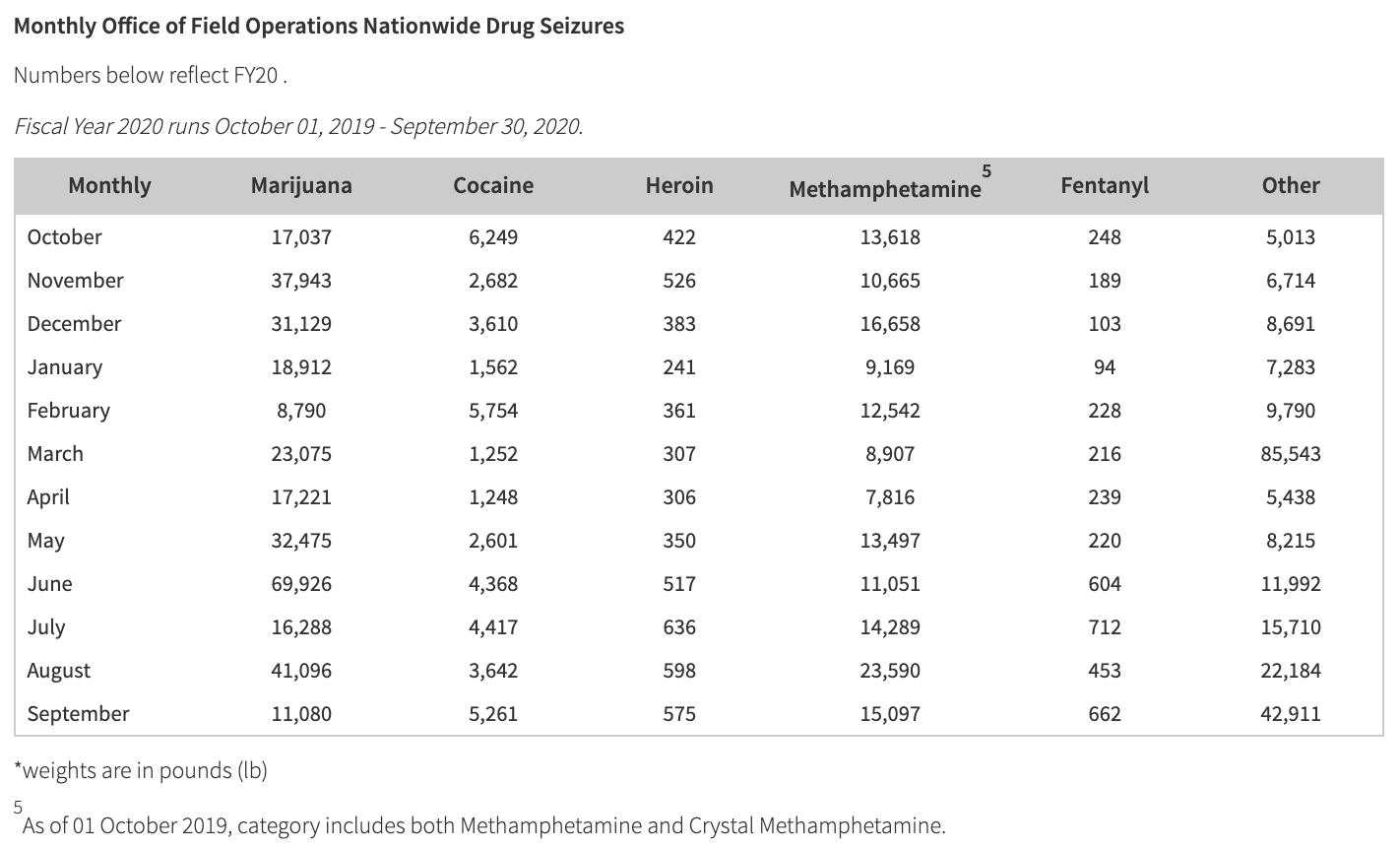Federal data released Wednesday afternoon revealed that U.S. Customs and Border Protection’s field offices and ports of entry nationwide seized 763,192 pounds of narcotics in fiscal 2020. And Border Patrol agents who work in the land between official crossing points on the northern and southern borders seized 294,950 pounds of illegal or regulated drugs in fiscal 2020 year, which ran from Oct. 1, 2019, through Sept. 30.
Ports of entry include land, air, and seaports where trade, travelers, and shipments are inspected before entering the United States, as well as airport facilities where foreign mail and packages are combed through by federal officers.
Border Patrol used to seize 9 times as many pounds of drugs as it now does, but the number has dropped from 1.9 million in 2014. Over the past six years, agents have found far less marijuana being smuggled into the country, which made up more than 99% of the drugs it seized back then.
At the ports of entry and field offices, marijuana made up the biggest amount of narcotics Border Patrol found at 324,973 of the 763,192 pounds. Methamphetamine was the second most popular drug seized by officers. More than 156,000 pounds of meth were blocked, followed by 42,645 pounds of cocaine, 5,222 pounds of heroin, and 3,967 pounds of fentanyl. Another 229,484 pounds of drugs described as “other” were also uncovered.
Meth seizures by CBP’s field offices were not tracked until 2015, and a gram of fentanyl is worth far more than a gram of marijuana, making the pounds seized less indicative of the magnitude of the seizure. Meth has also seen an explosion, with seizures increasing at a rate greater than 10 since 2014.

Smaller amounts of drugs were seized at Border Patrol highway checkpoints, of which several dozen are operated within 100 miles north of the U.S.-Mexico border. The checkpoints are meant to stop human, drug, and contraband smuggling that went undetected initially crossing the border. Agents at checkpoints stopped more than 40,000 pounds.
An additional 287,000 pounds of drugs were found by CBP’s Air and Marine Operations arm, agents who detect smuggling operations oftentimes far south of the border in an effort to stop traffickers with large loads in international waters that later are broken down into smaller batches. Marijuana accounted for 165,000 pounds of the busts, while cocaine comprised 113,000 pounds.

